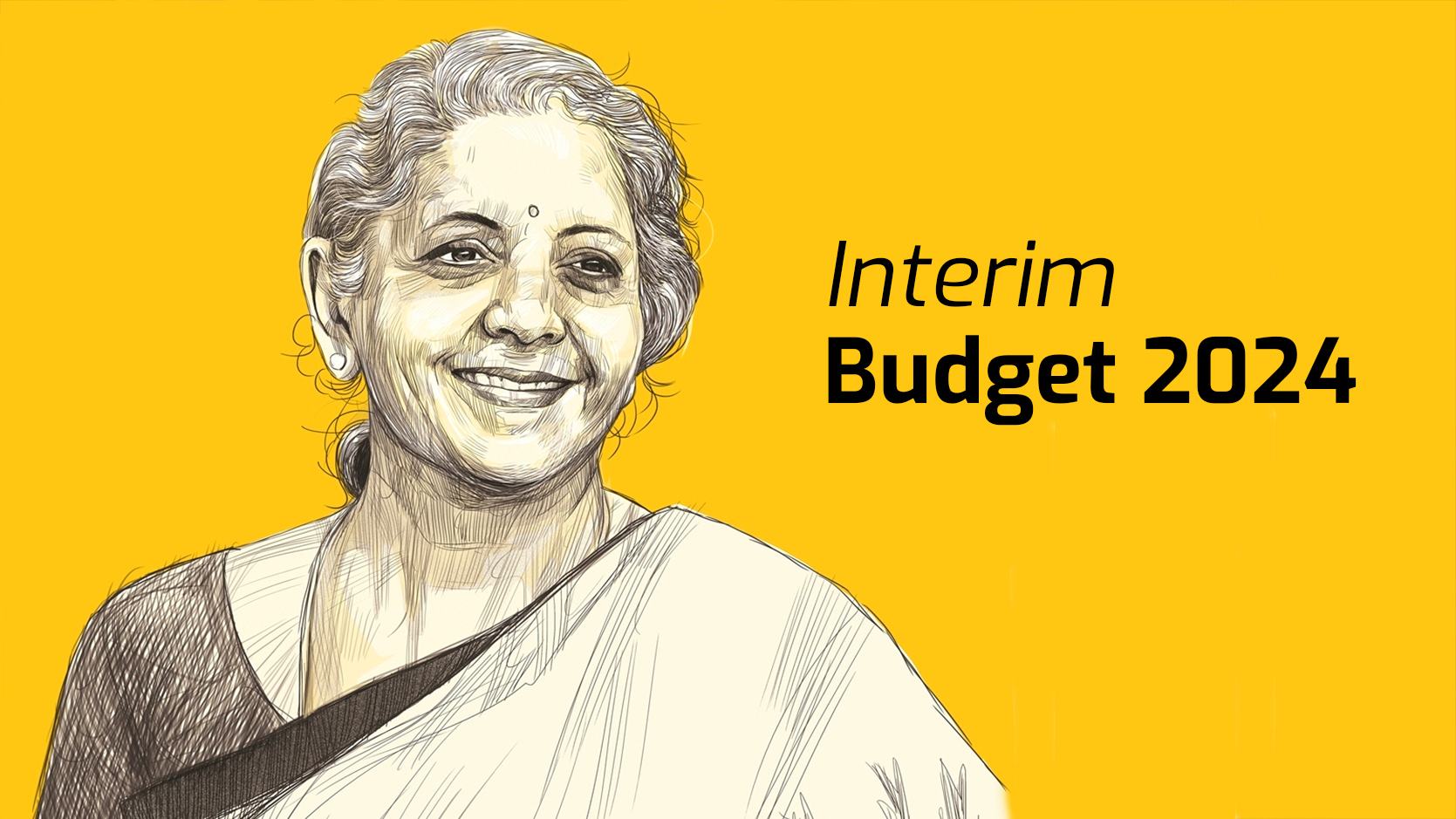Science & Technology
Global consensus must to face challenges in using AI for governance
Why in News?
In recent discussions at The Hindu AI Summit 2024, experts emphasized the critical need for a global consensus to address the challenges posed by Artificial Intelligence (AI) in governance. The issues raised included copyright concerns, data protection, cyber vulnerabilities, and the need to expand AI applications to newer areas. AI has the potential to revolutionize governance, but it also presents unique challenges that require careful consideration, regulation, and international cooperation.
Key Points Discussed at the Summit:
- AI in Health Sector:
- AI in Tuberculosis Diagnosis: The Tamil Nadu Health Department introduced AI tools in 2022 to improve tuberculosis diagnosis in remote areas. With 45 mobile vans fitted with digital X-ray machines, 6 vans were equipped with AI tools. Over the past two years, more than 56,000 people have been screened. The AI tool doubled the detection rate compared to traditional methods, providing accurate diagnoses on par with manual methods.
- AI in Preventing Elephant Deaths: In Coimbatore, AI was used to address the issue of elephant deaths on railway tracks. AI-based solutions helped in tracking elephant movements, mitigating accidents caused by their migration between forest patches.
- Expanding AI to New Areas: Experts advocated for expanding AI’s role in areas like eye health (screening for refractive eye errors in children) and pregnancy-induced hypertension (PIH). AI can also aid in predictive analytics, providing solutions for disaster management and cybersecurity.
- Building Digital Infrastructure: B. Ravindran, from the Indian Institute of Technology-Madras, highlighted that AI isn’t a one-size-fits-all solution. While AI has made significant strides, especially in governance, it forms only a small part (20-30%) of the overall system, emphasizing the importance of digital infrastructure and region-specific solutions.
- Concerns and Caution:
- Cultural Context in AI Development: AI models must be designed to suit the Indian context, considering regional variations in language, culture, cuisine, etc. Prematurely applying existing AI models might ignore these unique aspects.
- AI Safety and Regulation: The Indian government plans to establish an AI Safety Institute to develop safeguards tailored for India’s diverse needs.
- Global Leadership in AI Governance: Hasit Trivedi, from Firstsource, stressed that India, alongside the United States and China, has the potential to lead in AI innovation. However, India must focus on data protection, localization, and preventing the exportation of data to safeguard its digital sovereignty.
- Generative AI and its Implications: The rapid growth of Generative AI introduces new challenges in terms of copyright and data protection. India must ensure that it does not become a “digital slave” to foreign AI technologies but also localize AI applications to suit Indian realities.
Key Aspects of AI in Governance Discussed at the Summit
| Area | AI Applications | Challenges | Potential Solutions |
|---|---|---|---|
| Health Sector | Tuberculosis detection, AI-driven mobile health vans | Accuracy, accessibility in remote areas | Expand AI tools in other healthcare sectors, including eye health and PIH |
| Wildlife Conservation | Preventing elephant deaths on railway tracks in Coimbatore using AI to track movements | AI’s adaptation to local environmental conditions | Expand AI in environmental and wildlife safety |
| AI in Digital Infrastructure Development | Development of region-specific AI models, AI Safety Institute | Lack of robust digital infrastructure, need for safe AI usage | Invest in infrastructure and region-specific AI training |
| Global AI Leadership | India’s potential to contribute to global AI technologies | Data protection, exportation of data | Localize AI to India, create regulations for digital sovereignty |
Further Research is Needed on:
- Ethical frameworks for AI governance that protect individual rights.
- Detailed case studies on AI’s effectiveness in governance sectors (health, agriculture, law enforcement).
- The role of international cooperation in addressing cross-border challenges related to AI regulations.
Social Issue
A ‘bribery scheme’ to bag lucrative solar power deals
Why in News?
The U.S. Department of Justice (DoJ) has indicted industrialist Gautam Adani and his associates in a significant bribery scandal aimed at securing lucrative solar power contracts in India. This indictment implicates senior executives of Adani Green Energy Ltd. and Azure Power Global Ltd., a renewable energy company once listed on the New York Stock Exchange. The case revolves around a bribery scheme allegedly designed to influence Indian government officials to secure solar power deals, particularly between 2019 and 2022.
Key Allegations and Process Overview:
- Motivation for Bribery:
- In 2019-2020, both Azure Power and Adani Green Energy Ltd. won major solar power contracts via the Solar Energy Corporation of India (SECI). The contracts involved the supply of 4 GW and 8 GW of solar power respectively.
- The SECI struggled to find buyers for the high-priced energy produced, leading to the risk of non-fulfillment of the contracts.
- Bribery Scheme Unveiled:
- Adani and Azure Power Executives, including Gautam Adani, Sagar Adani, and others, allegedly devised a plan to offer bribes to Indian government officials to influence State electricity distribution companies (DISCOMs) to enter into Power Sale Agreements (PSAs) with SECI.
- The bribe amounts were estimated at ₹2,029 crore (approximately $265 million), with a major portion (~₹1,750 crore) intended for officials in Andhra Pradesh.
- Bribe Payments and Documentation:
- Mobile Messaging: The alleged co-conspirators used electronic messaging apps to track and discuss bribe payments. This included “Bribe Notes”, which detailed the states involved, bribe amounts, and the government officials targeted for the payments.
- Meeting and Coordination: Meetings were organized to discuss the details, and even PowerPoint presentations were used to finalize plans for making and concealing bribe payments.
- Bribe Payment Mechanics:
- Azure Power’s Contribution: Azure Power was obligated to pay ₹55 crore for the 650 MW PPAs and ₹583 crore for the 2.3 GW PPAs. In one meeting, alternative methods to disguise bribe payments were discussed.
- Eventually, Azure Power returned the 2.3 GW PPAs to SECI in exchange for Adani Green acquiring these contracts, thus fulfilling its bribery obligations.
- Impact and Execution:
- The PSAs were signed by DISCOMs from various states, including Andhra Pradesh, Odisha, Jammu & Kashmir, Tamil Nadu, and Chhattisgarh, between 2021-2022. Subsequently, PPAs for these projects were executed with SECI.
- Legal and Corporate Implications:
- Azure Power was allegedly forced to withdraw from the 2.3 GW PPAs due to economic concerns, but it was later found that this move was orchestrated to disguise the corrupt arrangement.
- The termination of the 2.3 GW PPAs and realignment with Adani Green’s subsidiaries in March 2024 marked the final stage of the scheme.
Concise Summary:
The Adani-Azure Power Bribery Scheme is a significant corruption scandal involving bribes to Indian government officials to secure solar power contracts. The scheme, spanning from 2019 to 2024, reveals how corporate executives manipulated official processes to ensure lucrative contracts through illegal means. The use of digital tools, including mobile messaging apps, for tracking bribe details underscores the sophistication of the operation. The case highlights serious governance issues in India’s renewable energy sector and raises critical questions about corporate ethics, transparency, and accountability.
Environment & Ecology
India needs an environmental health regulatory agency
Why in News?
India’s current environmental and public health trajectory presents an urgent need for a comprehensive regulatory body to tackle environmental health challenges in a systematic manner. With growing concerns about pollution, climate change, and public health, an Environmental Health Regulatory Agency (EHRA) could help integrate pollution control measures and health risk mitigation strategies effectively.
Current Environmental and Health Challenges in India
India faces multiple environmental health challenges, including air, water, and soil pollution, all of which have significant impacts on public health. According to the Emissions Gap Report 2024 by the United Nations Environment Programme, India’s greenhouse gas emissions have increased by over 6% compared to the previous year. Concurrently, pollutants in the air and water continue to lead to serious health issues.
- Air Pollution: Studies link exposure to PM2.5 particles with respiratory diseases, cardiovascular problems, mental health disorders, and complications in pregnancy. These effects disproportionately affect vulnerable groups such as children, the elderly, and economically disadvantaged populations.
- Water and Soil Pollution: Contaminants like heavy metals and pesticides are also linked to chronic diseases, with increasing concerns over water-borne diseases and contaminated food sources.
Fragmented Environmental Governance
India’s environmental governance is fragmented, with key institutions like the Central Pollution Control Board (CPCB), the Ministry of Environment, Forest and Climate Change (MoEFCC), and the Ministry of Health and Family Welfare (MoHFW) dealing with different aspects of environmental management, health, and pollution control. However, these ministries operate in silos, with little to no data flow between them, hindering coordinated efforts.
A more integrated approach, exemplified by global agencies like the U.S. Environmental Protection Agency (EPA) and Germany’s Federal Environment Agency (UBA), could help India streamline its environmental health policies. These organizations successfully bridge environmental management with public health protection, offering a framework India can adapt.
Role of an EHRA
An EHRA in India could act as a central body that integrates environmental and health data, enabling better coordination and policymaking. This agency could:
- Integrate Pollution Control with Health: By synthesizing data from air quality monitoring and public health databases, the EHRA could provide a more holistic approach to managing pollution’s health impacts.
- Data-Driven Policy Making: The EHRA could support evidence-based decision-making by conducting research and developing scientific frameworks that focus on India’s unique environmental health challenges. For example, studies on air pollution’s long-term effects on respiratory health and vector-borne diseases could help in formulating region-specific interventions.
- Global Collaboration: The EHRA could collaborate with international bodies like the WHO and UNFCCC, adopting best practices and ensuring that India meets global standards on environmental health. This collaboration would also help India contribute meaningfully to international climate agreements such as the Paris Agreement.
- Public Awareness and Empowerment: India faces significant gaps in public awareness about environmental health risks. The EHRA could take on an advocacy role, educating citizens on the dangers of pollution and empowering communities to push for cleaner air and water.
- Localized Solutions: Environmental health issues differ greatly across India’s diverse regions. The EHRA could work closely with state and municipal governments to develop tailored solutions that address specific local challenges, such as pollution from industrial zones or urban slums.
- Promote Sustainable Growth: Contrary to fears that regulation may hinder economic growth, the establishment of an EHRA could foster innovation, create green jobs, and promote sustainable industries. The U.S. EPA, for instance, has shown that regulatory efforts can drive investments in renewable energy and pollution prevention while also boosting public health and economic resilience.
Benefits of an EHRA
The establishment of an EHRA would have several key benefits:
- Public Health Improvements: A unified framework for addressing environmental health could lead to significant reductions in non-communicable diseases linked to pollution.
- Economic Resilience: Sustainable practices promoted by the EHRA could create jobs in green technologies and public health sectors, boosting long-term economic resilience.
- Compliance with Global Commitments: An EHRA could help India meet its commitments under international climate and public health agreements.
Challenges in Establishing an EHRA
Despite the potential benefits, establishing an EHRA would face several challenges:
- Bureaucratic Resistance: Overcoming bureaucratic inertia within government ministries and agencies that are resistant to change.
- Industry Opposition: Certain industries may resist stricter environmental regulations due to concerns over increased costs or operational disruptions.
- Funding and Resources: Ensuring sufficient funding and resources to establish a robust, data-driven agency.
Way Forward
To overcome these challenges, the following steps are recommended:
- Clear Inter-Ministerial Coordination: Establishing robust frameworks for coordination across various ministries involved in environmental and health regulation.
- Measurable Objectives: Setting clear, measurable objectives for the EHRA’s operation, including pollution reduction targets, health outcomes, and policy effectiveness.
- Public Engagement: Involving citizens in environmental health initiatives, especially through local governance bodies like panchayats, to foster community-driven accountability and action.
In Brief
International Criminal Court (ICC)
- Establishment: The International Criminal Court (ICC) was established on 17 July 1998 by the Rome Statute. The statute entered into force on 1 July 2002.
- Jurisdiction and Mandate: The ICC investigates and prosecutes individuals accused of genocide, war crimes, crimes against humanity, and the crime of aggression. It is the only permanent international criminal tribunal.
- Headquarters: The ICC’s headquarters is located in The Hague, Netherlands.
- Members and Membership: 123 countries are States Parties to the Rome Statute. Notable countries that are not members of the ICC include the United States, China, Russia, Israel, and India.
- Funding: The ICC is funded by contributions from States Parties and voluntary contributions from governments, organizations, individuals, and corporations.
Raorchestes asakgrensis (Frog Species)
- Discovery: A new species of frog, Raorchestes asakgrensis, was discovered in the Eman Asakgre Community Reserve, located in the Garo Hills of Meghalaya. The species is named in honor of the local community’s support in conservation efforts.
- Features:
- This is a small arboreal frog found at an elevation of 174 meters.
- It is characterized by a pointed snout and visible tympanum.
- Male frogs measure about 20.49 mm in snout-vent length, and females are slightly larger at 22.8 mm.
- Males engage in calling from shrubs during dusk, often perched at least 1.5 meters high, with calling activity peaking after the first monsoon rains.
Tungareshwar Wildlife Sanctuary
- Location:
- Situated in the Palghar district of Maharashtra, 75 km from Mumbai.
- The sanctuary is spread across 85 sq. km, predominantly hilly terrain.
- It acts as an important corridor connecting Sanjay Gandhi National Park (Borivali National Park) and Tansa Wildlife Sanctuary.
- Landscape and Vegetation:
- Characterized by hilly terrain, dense forests, and small rivers or streams.
- Vegetation includes a mix of Dry Deciduous, Moist Deciduous, and Semi-Evergreen forests.
- Flora: Dominant tree species include teak, bamboo, and mango.
- Fauna:
- Mammals: The sanctuary is home to animals like Leopard, Wild Boar, Barking Deer, Langur, Bonnet and Rhesus Macaque, and Black-naped Hare.
- Birds: It harbors a variety of bird species including Crested Serpent-eagle, Jungle Owlet, White-eyed Buzzard, Oriental Honey-buzzard, Emerald Dove, and Heart-spotted Woodpecker.
- Cultural Significance: The sanctuary is home to several ancient temples, with the Tungareshwar Temple, dedicated to Lord Shiva, being the most famous.
Ustad Bismillah Khan Yuva Puruskar
- Inception: The award was established in 2006 by the Sangeet Natak Akademi in honor of Bharat Ratna Ustad Bismillah Khan.
- Purpose: The award aims to recognize and encourage young performing artists (up to 40 years of age) in various forms of music, dance, drama, folk & tribal arts, and puppetry.
- Award Details:
- The award includes a cash prize of Rs 25,000, a plaque, and an angavastram (traditional garment).
- The award is given annually in a special ceremony, which takes place both in Delhi and outside Delhi.
- Objective: The primary goal is to motivate and support young artists in the performing arts, to help preserve and promote traditional and contemporary art forms across India.
Artificial Intelligence Data Bank
- Objective: The AI data bank aims to foster innovation and enhance national security by providing high-quality, diverse datasets to researchers, startups, and developers.
- Purpose: The data bank will facilitate the development of scalable and inclusive AI solutions, aiding sectors like disaster management and cybersecurity.
- Launch: The initiative was launched by the Minister of Science and Technology at the 7th ASSOCHAM AI Leadership Meet 2024.
- Focus Areas: It will enhance national security by enabling real-time analytics using data from satellites, drones, and IoT.
- Alignment: The AI data bank is aligned with India’s goal of using AI for predictive analytics in critical sectors.
International Cooperative Alliance (ICA)
- Foundation: The ICA was founded in 1895, making it one of the oldest non-governmental organizations globally.
- Purpose: It is a non-profit international association that represents and serves cooperatives worldwide.
- Membership: The ICA represents around 3 million cooperatives, with 1 billion cooperative members across the planet.
- Role: The ICA serves as the apex body for cooperatives, providing a global voice, sharing knowledge, and promoting coordinated action for cooperatives.
- Cooperative Identity: The ICA is the guardian of the Statement on Cooperative Identity, which defines cooperatives’ values and operational principles.
- Membership Coverage: More than 306 organizations from 105 countries are part of ICA, covering sectors like agriculture, banking, housing, health, insurance, etc.
- Headquarters: The ICA is headquartered in Brussels, Belgium and operates regional offices for Africa, Asia-Pacific, Europe, and the Americas.
- Sectors Represented: The ICA works with cooperatives across a variety of sectors, including agriculture, industry, consumer retail, banking, fisheries, health, housing, and insurance.
MeerKAT Radio Telescope
- Location: MeerKAT is located in the Northern Cape province of South Africa.
- Origin and Name: Initially called the Karoo Array Telescope (KAT) with 20 receptors, it was renamed MeerKAT after the South African government increased funding to allow for 64 receptors. The name “MeerKAT” means “more of KAT”.
- Part of SKA: MeerKAT is part of South Africa’s contribution to the Square Kilometre Array (SKA) project, which aims to create the largest and most sensitive radio telescope in the world.
- Function: The telescope uses radio signals from space to study the evolution of the universe and the various celestial bodies within it.
- Components: MeerKAT consists of 64 dishes, each measuring 13.5 meters in diameter, with the maximum distance between dishes reaching 8 km.
- Technology: Signals are received and processed in a subterranean processor building, allowing the telescopes to operate together as a single instrument.
- Significance: It is the most powerful radio interferometer at centimeter wavelengths.
- Role in SKA: MeerKAT serves as a precursor instrument for the mid-frequency component of the SKA.





